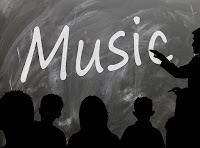Picture Books in the Music Classroom

Did you know that lots and lots of elementary music teachers use picture books in their classroom? They go way beyond the typical read-aloud. There are all sorts of ways music teachers can link musical activities to books. Sound Effects When the characters in the book make noise, kids can use musical instruments to bring the sounds to life! Clicking sticks together, dinging a triangle, thumping a drum. You don't have to mention the sounds in your text for this to work, but vivid verbs can help: "Eliza stomped up the stairs" or "the dog swished through the tall grass" or "the thunder boomed." Character Themes If you've watched Star Wars , you know character themes. Princess Leia has a beautiful melody. Darth Vader has a menacing theme. Luke Skywalker's music is triumphant. If you have several distinct characters in your book, a music teacher could reinforce each one's appearance with a different instrument or a different tune. Dic...



